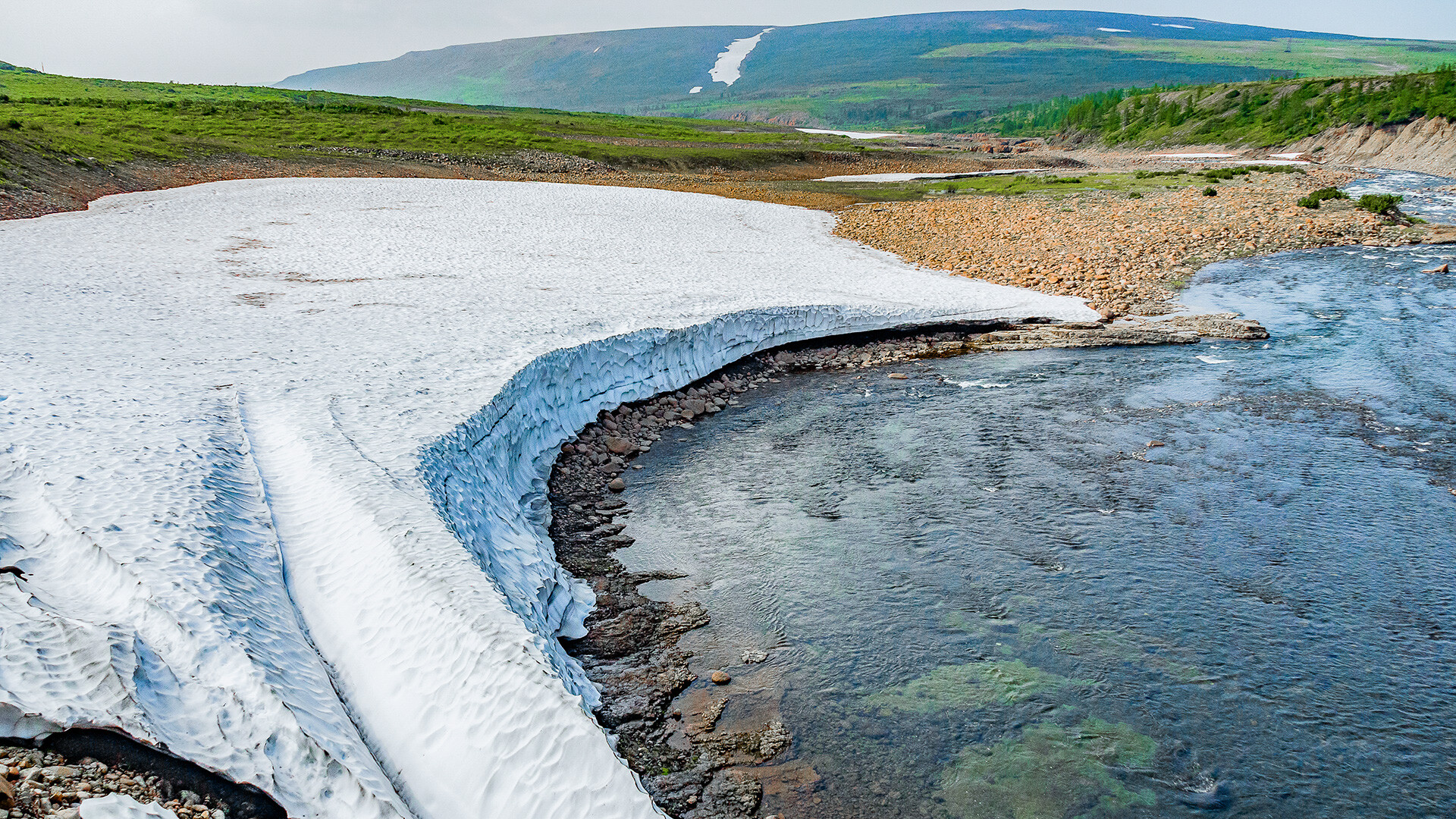
The temperature is about 30 Celsius. And the ice doesn't even begin to melt!
Pavel KuzmichevSummer in northern Siberia is very short – just a few weeks – but hot. We seem to have ended up in the middle of a heatwave, with temperatures in Norilsk reaching 30°C the whole week (and Norilsk is 300 km north of the Arctic Circle!). It was all the more surprising to see the sharp contrast between the weather and the Arctic scenery.
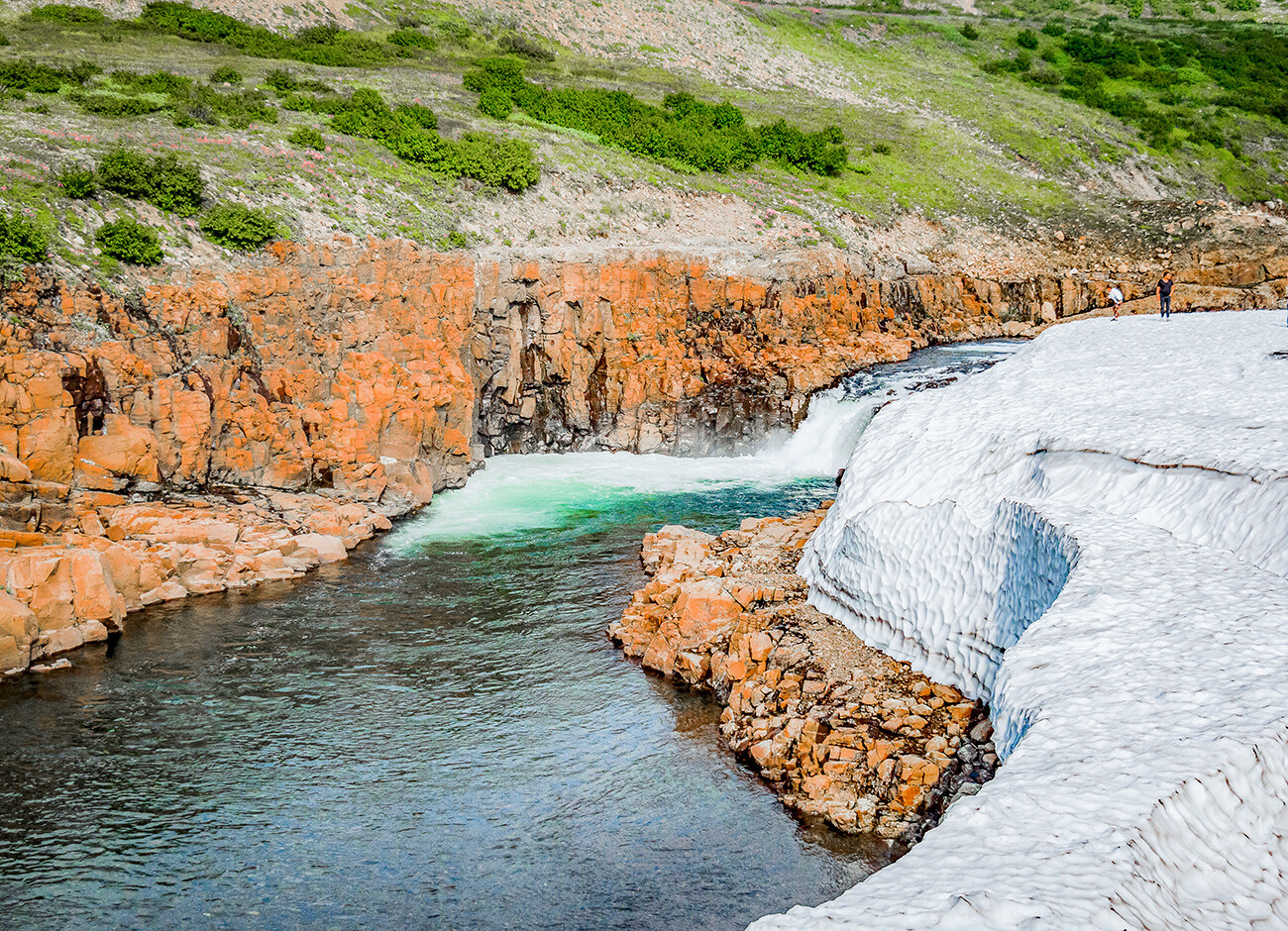
Look at the far right corner. Those are the people on top of the ice.
Pavel KuzmichevThe center of Norilsk is as lively as Nevsky Prospect in St. Petersburg. A thermometer in the main square shows +29°C.
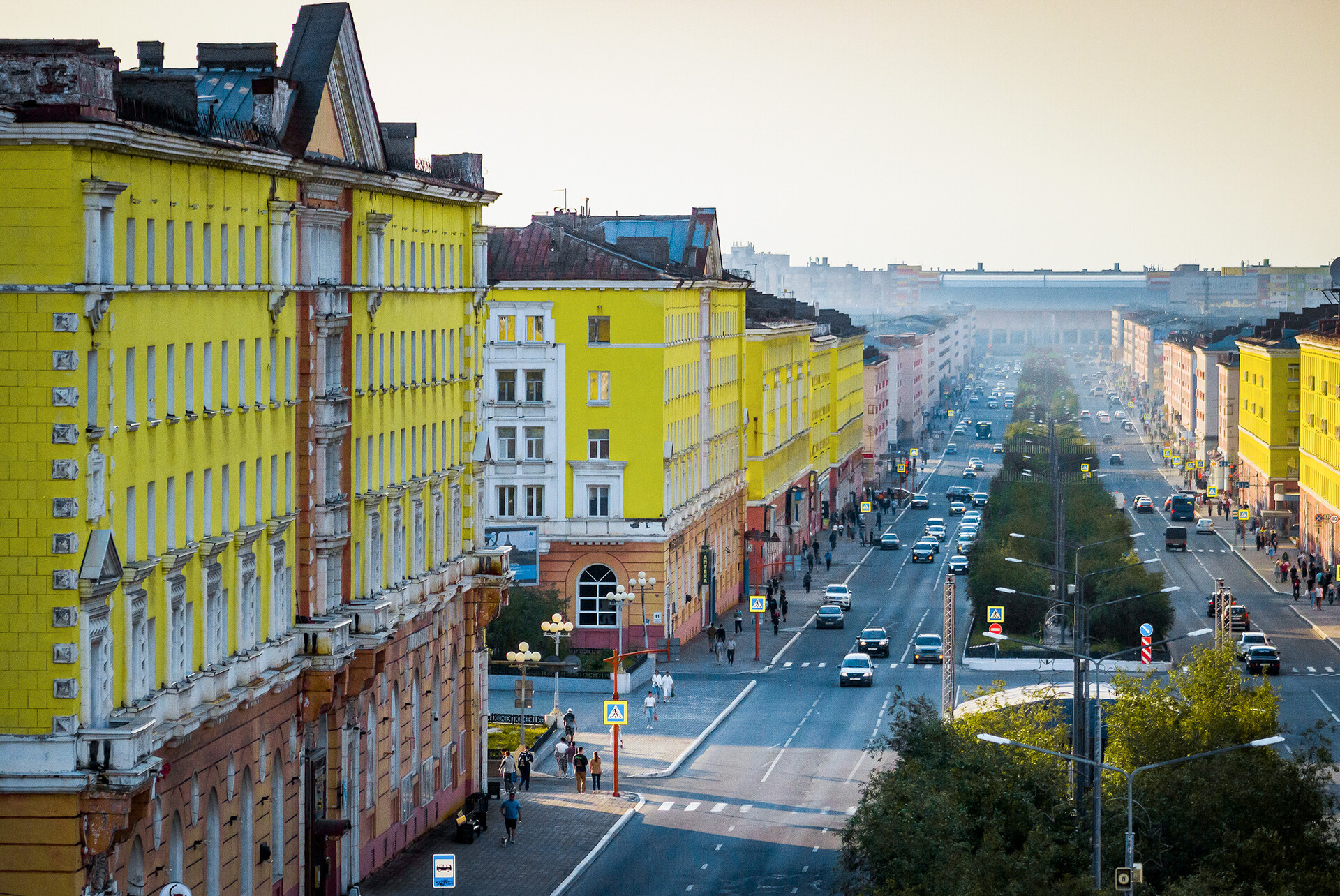
Lenin Prospect, the main street of Norilsk.
Pavel KuzmichevYou can't help but wonder if we're really in one of the coldest cities in the world, where the average annual temperature is -10°C. It's all very puzzling…
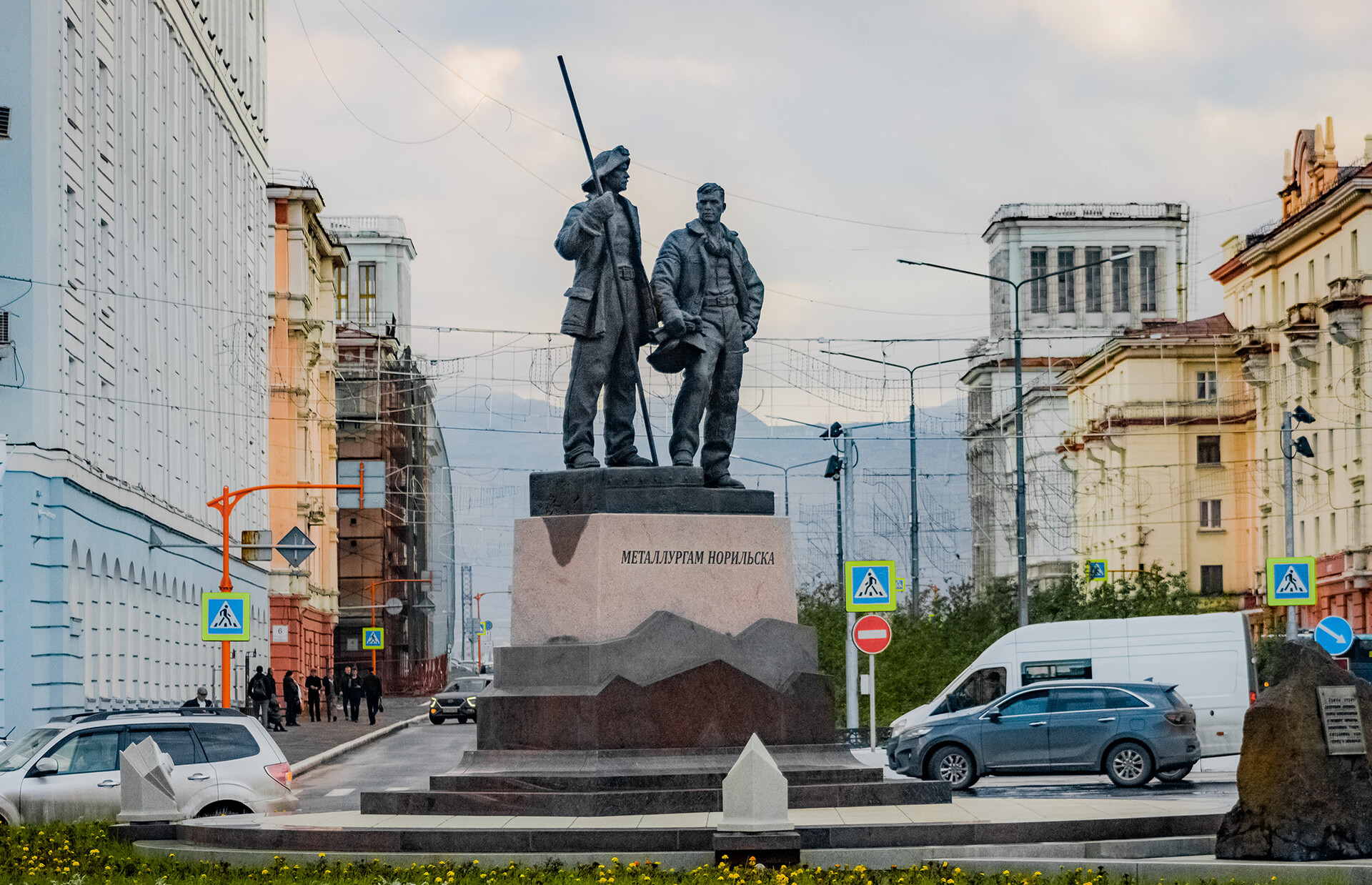
Central Norilsk.
Pavel KuzmichevBut, Norilsk residents confirm that such hot days last for a week or two a year and, usually, the summers are cold and rainy. Local residents, however, are certainly not bored. The city has a museum and a theater, as well as trendy exhibitions. And, when it is hot and they have the time, many people try to go out into the countryside. We decided to go along, as well.
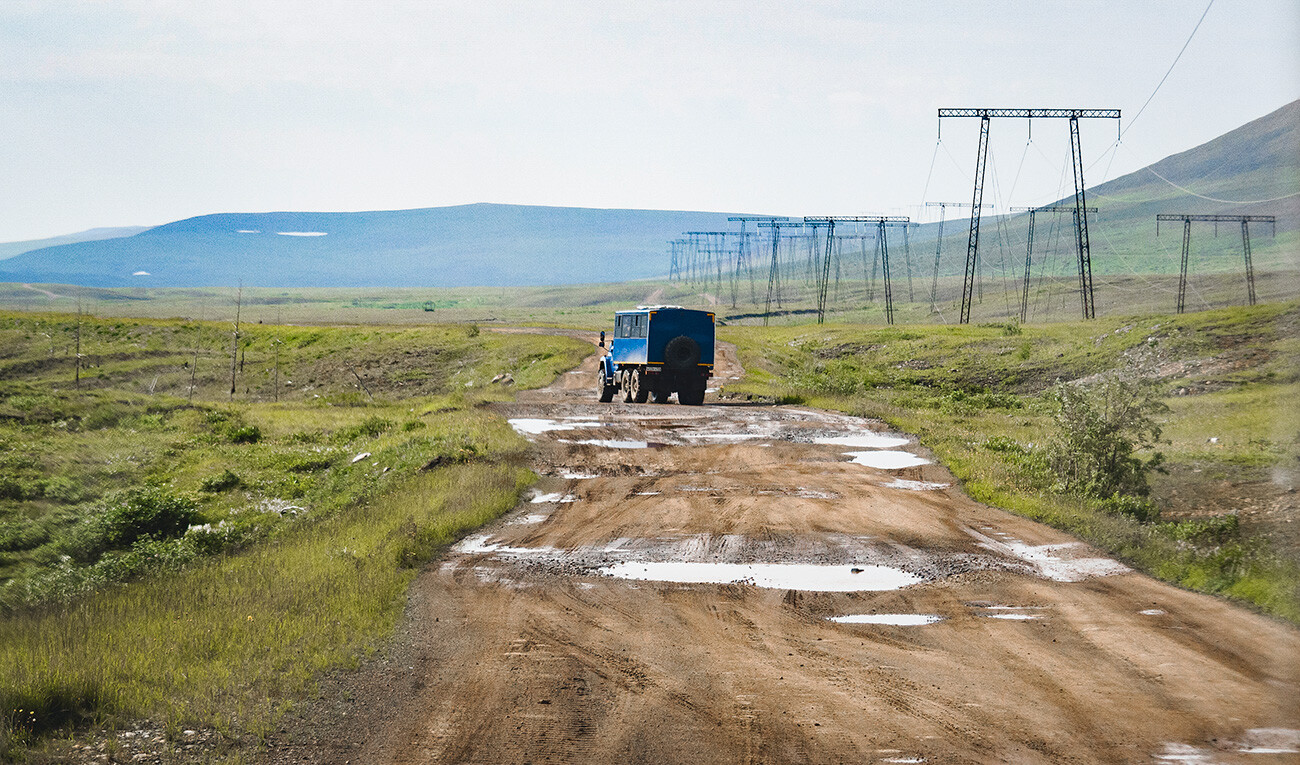
Only serious vehicles can drive on such a road.
Pavel Kuzmichev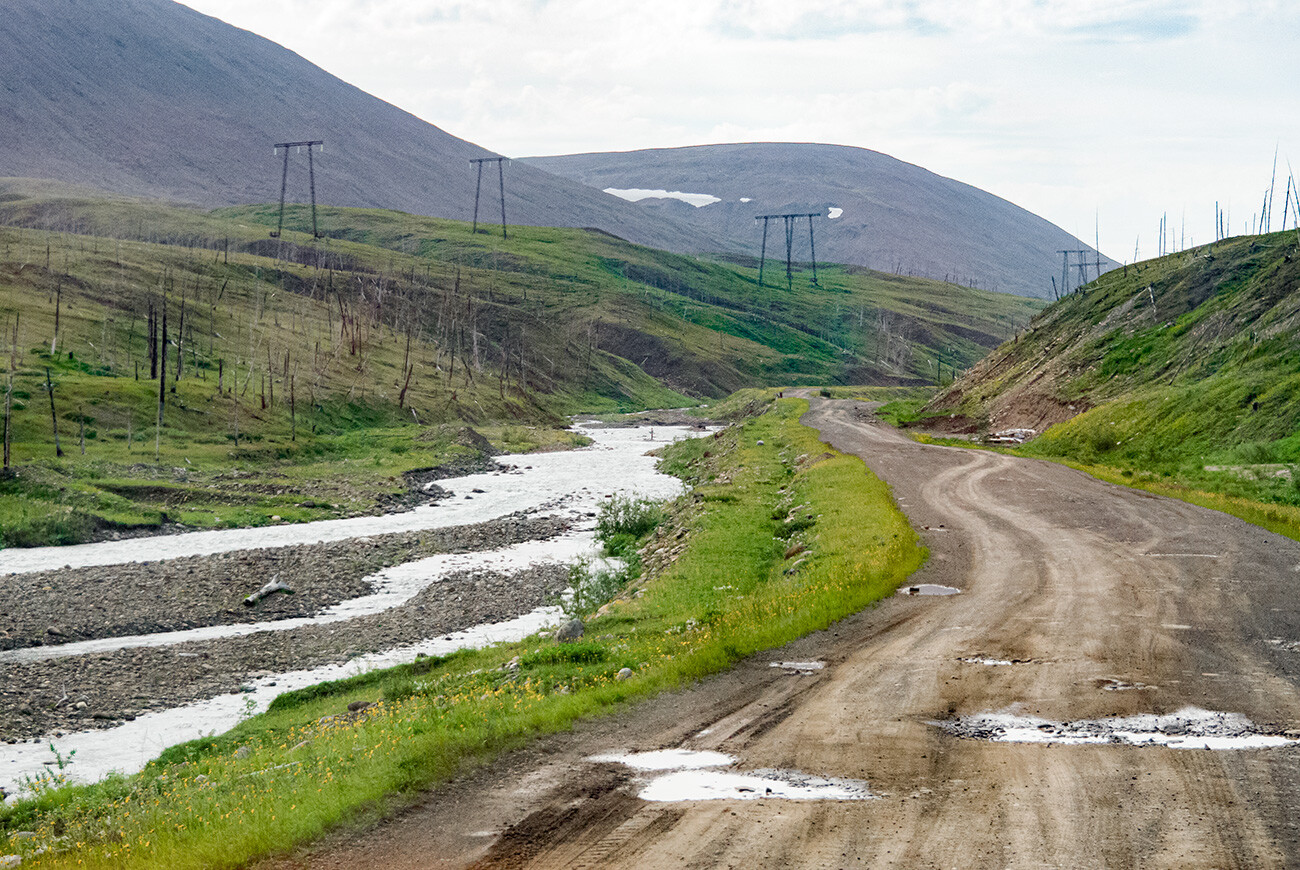
There is still snow in some places.
Pavel KuzmichevIn the valley of the River Yergalakh, we attended a festival of summer tourism organized by the city administration. Spending a weekend camping in a tent – what could be better! The journey in an all-terrain bus – an ordinary car wouldn't make it – took about an hour on a winding road. Along the way, we kept gasping all the time.
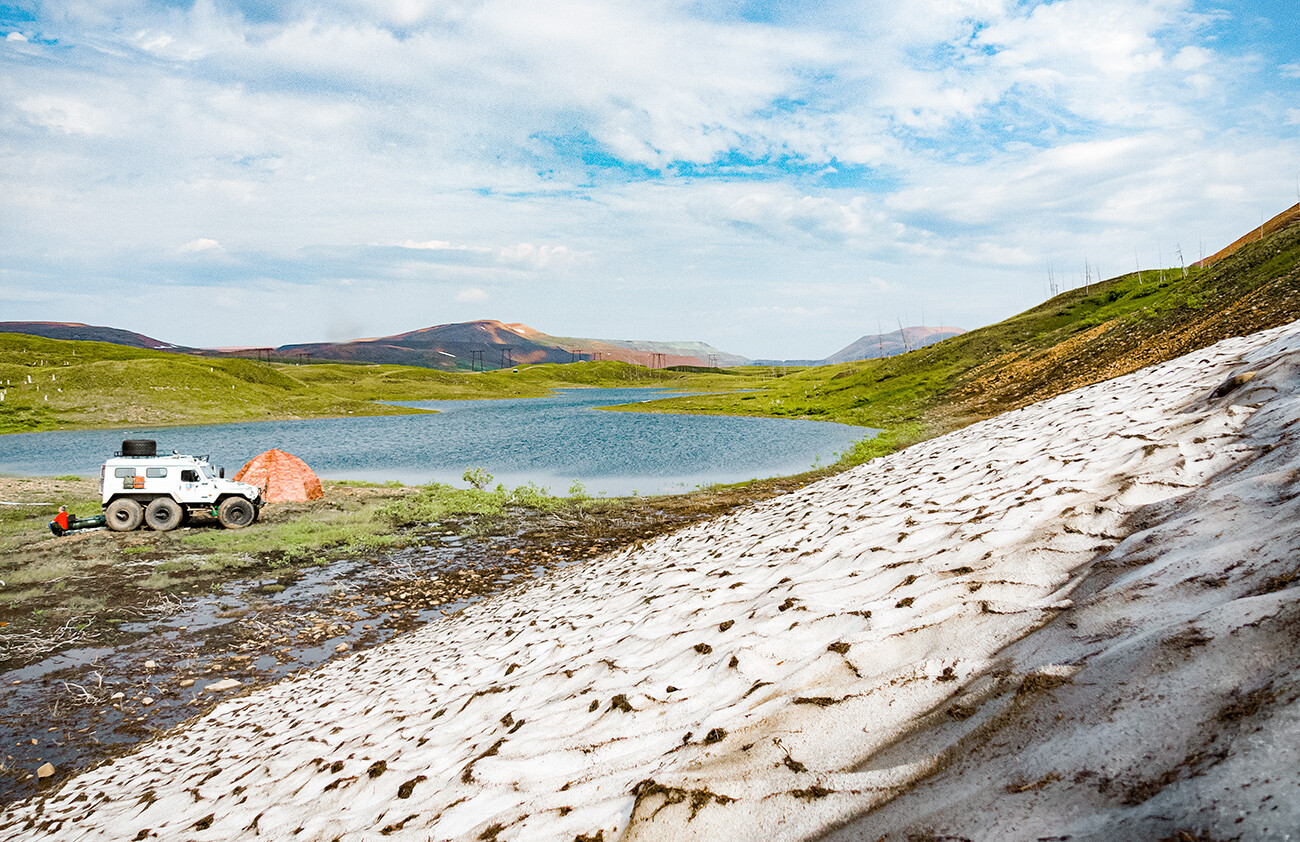
"Parking" by the ice. Yergalakh river valley.
Pavel Kuzmichev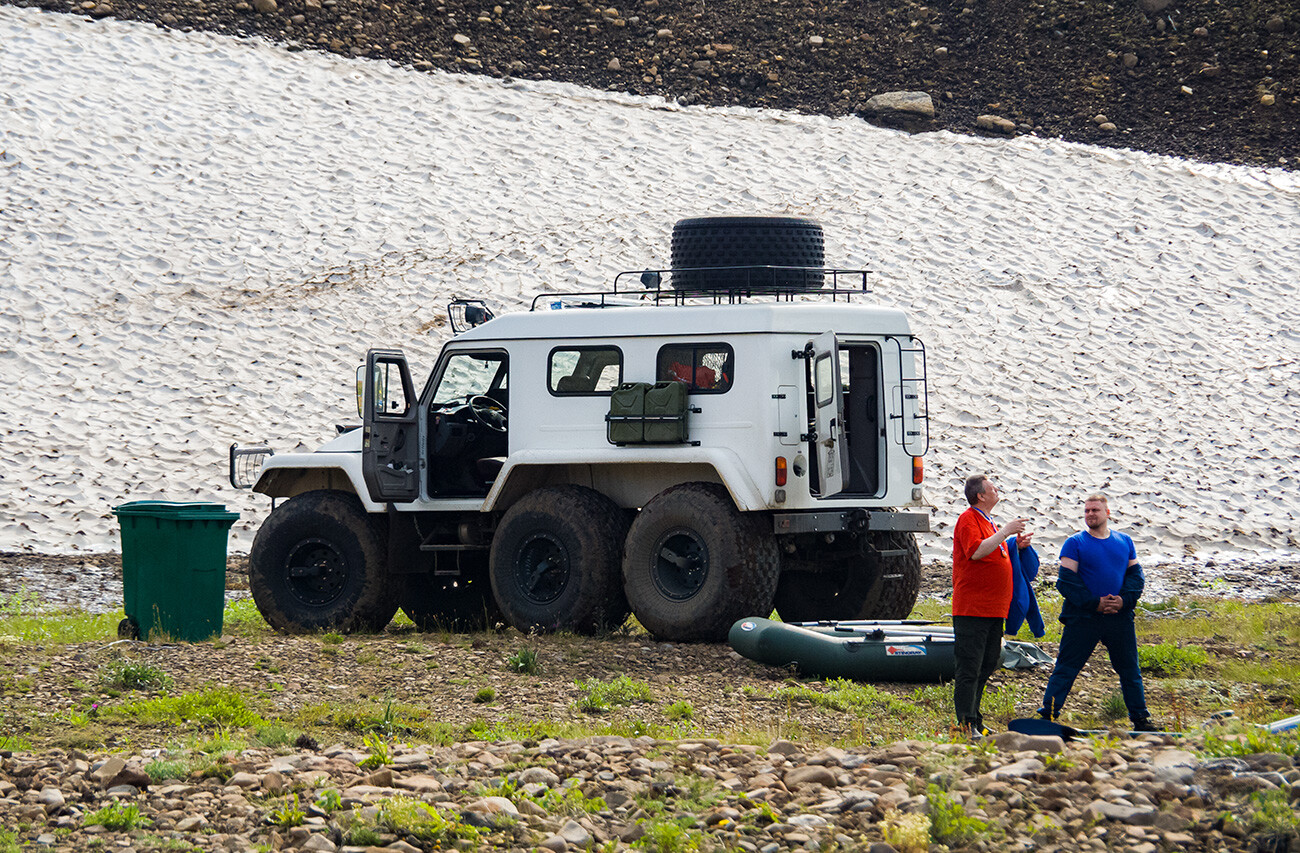
Seemed to fit.
Pavel KuzmichevOur route took us through an industrial zone. City vistas were replaced by views of factories and the factories by the sight of mountains. And then, the valley of the Siberian river Yergalakh spread out before our eyes.
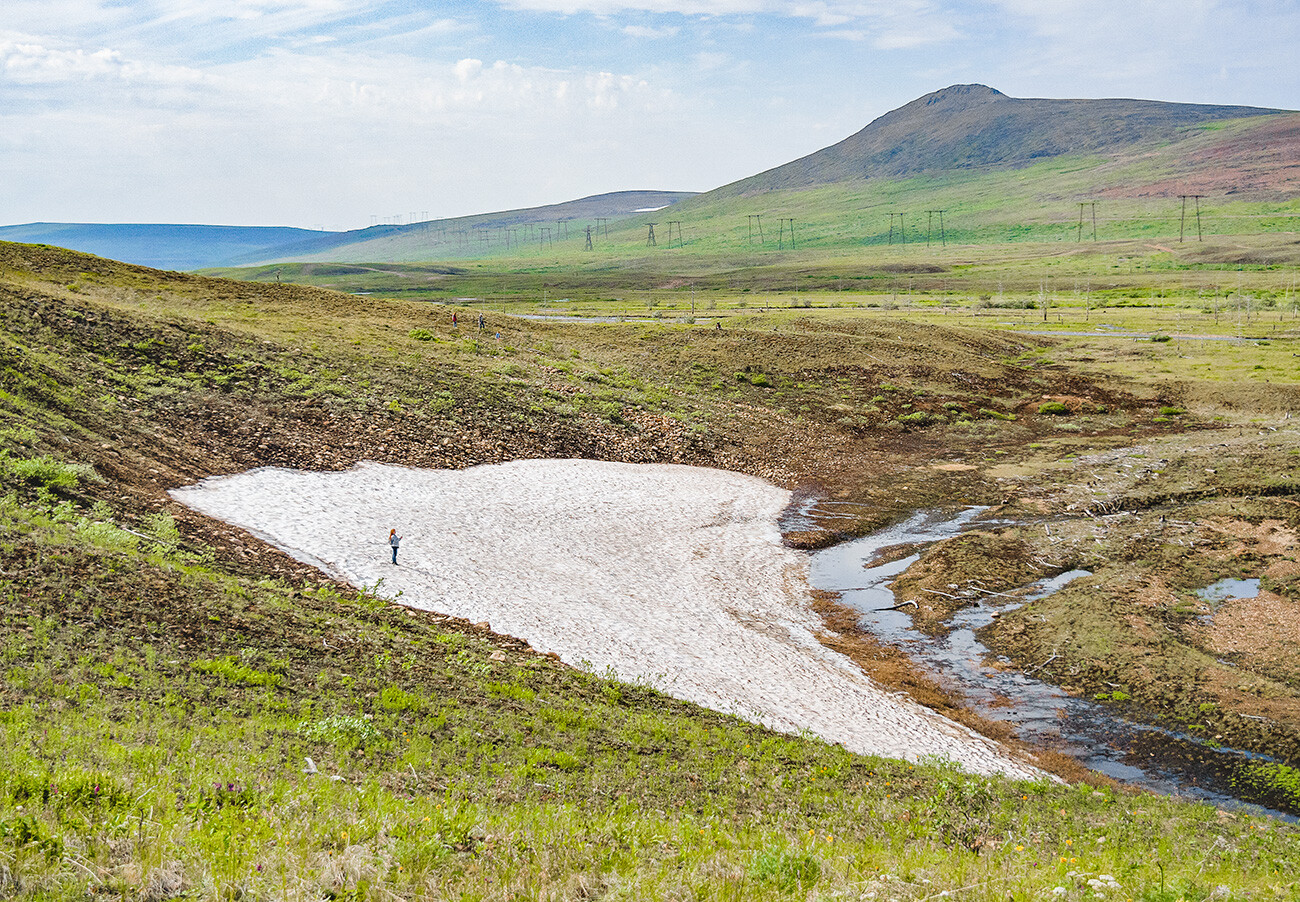
Selfie on the ice. Many in long-sleeved clothes due to the abundance of communicative mosquitoes.
Pavel KuzmichevIts hilly banks were covered with grass a vivid green color, in the midst of which were quite large patches of last year's (or even the year before last!) snow.
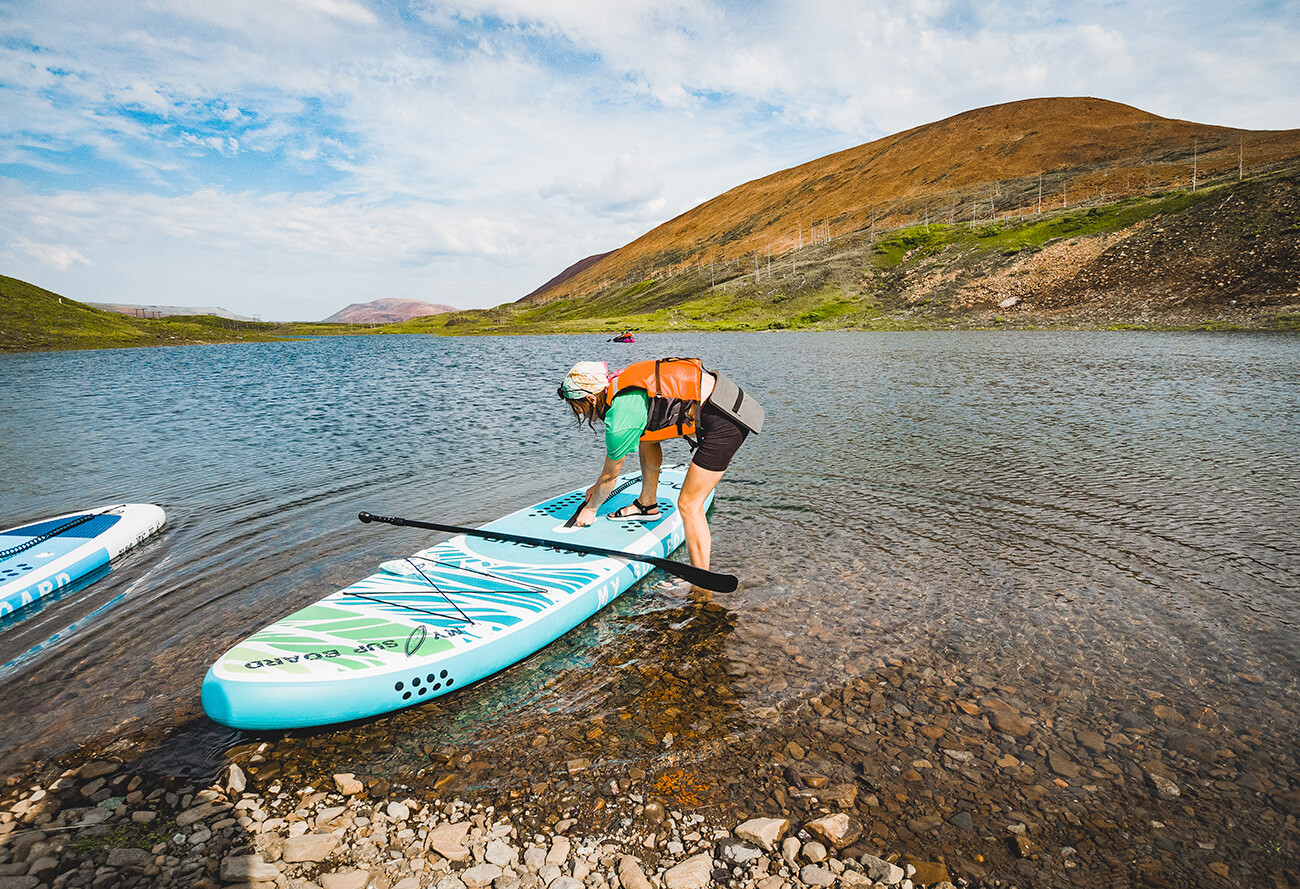
So cold water!
Pavel Kuzmichev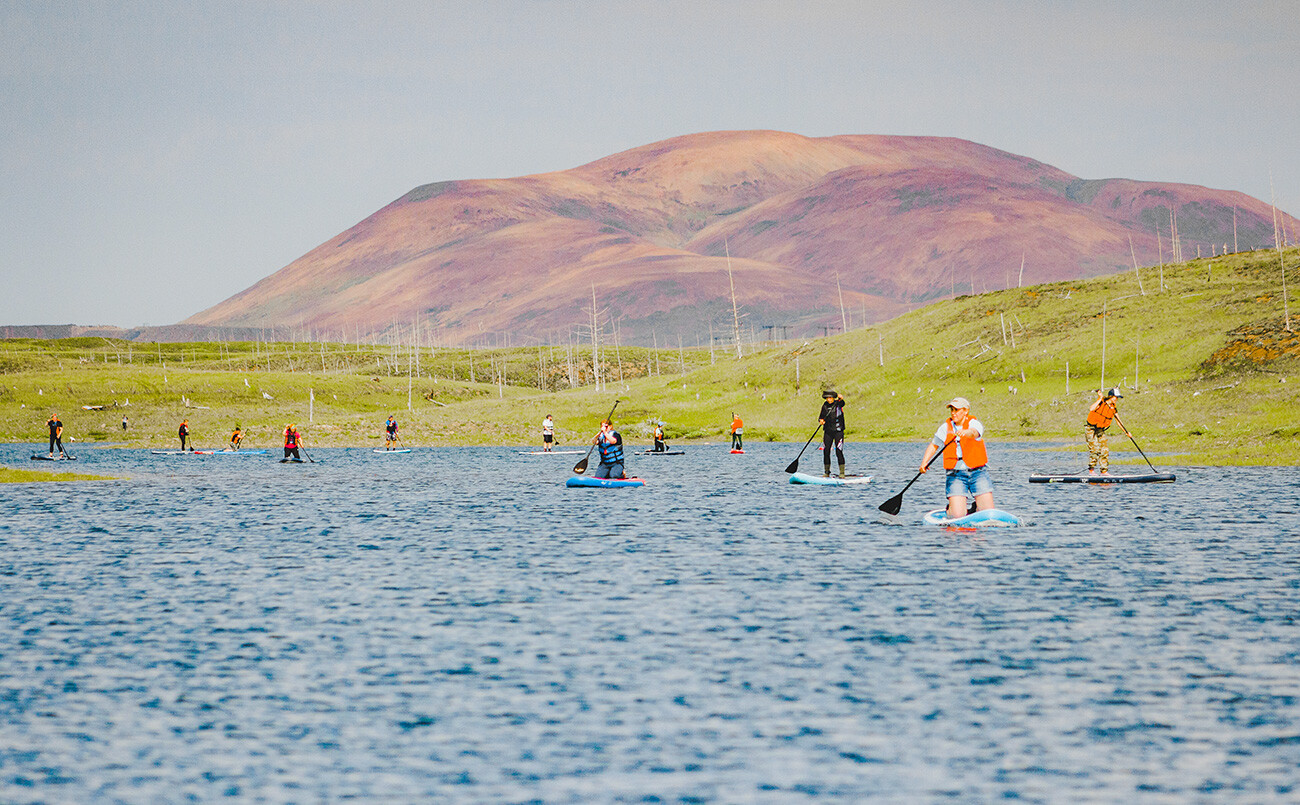
Most likely, we managed to see the most northerly SUPsurfing in the world.
Pavel KuzmichevIt was real snow and it was plentiful. Some people experimented by using it as a backdrop for striking photographs, while others made snowballs. But, our attention was drawn by some tourists, who immediately found a practical use for it. They took a small shovel, dug out half a bucketful of snow and made a makeshift icebox. It was obvious straight away that they were seasoned visitors to these parts.
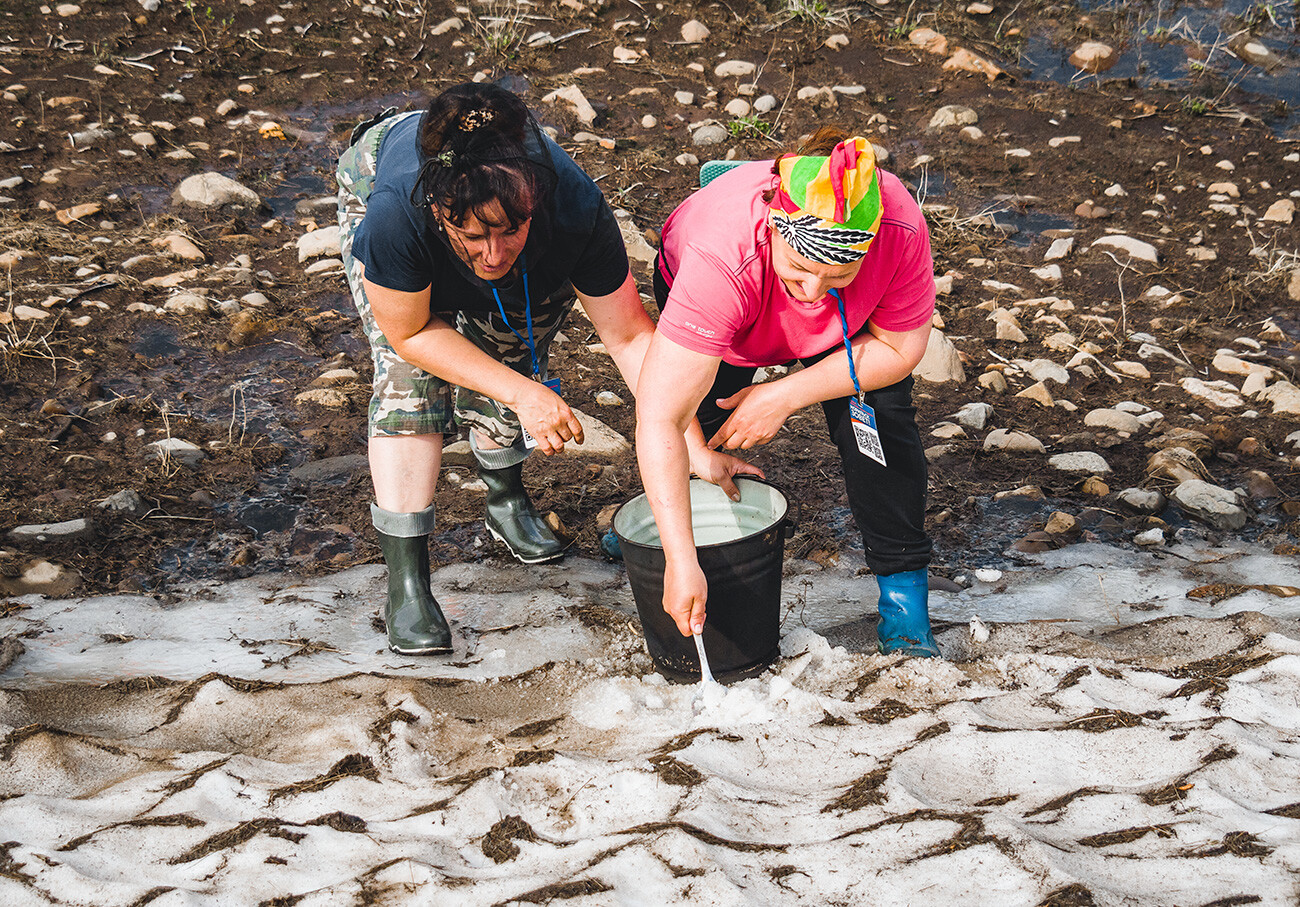
Snow always comes in handy.
Pavel KuzmichevA couple of days after that, we found ourselves in the valley of another river, the Khayerlakh, and then beside the River Ayakli. It took us a couple of hours to get to them by all-terrain buses, fording small rivers along the way. And the patches of built-up ice that we saw there proved to be an order of magnitude bigger.
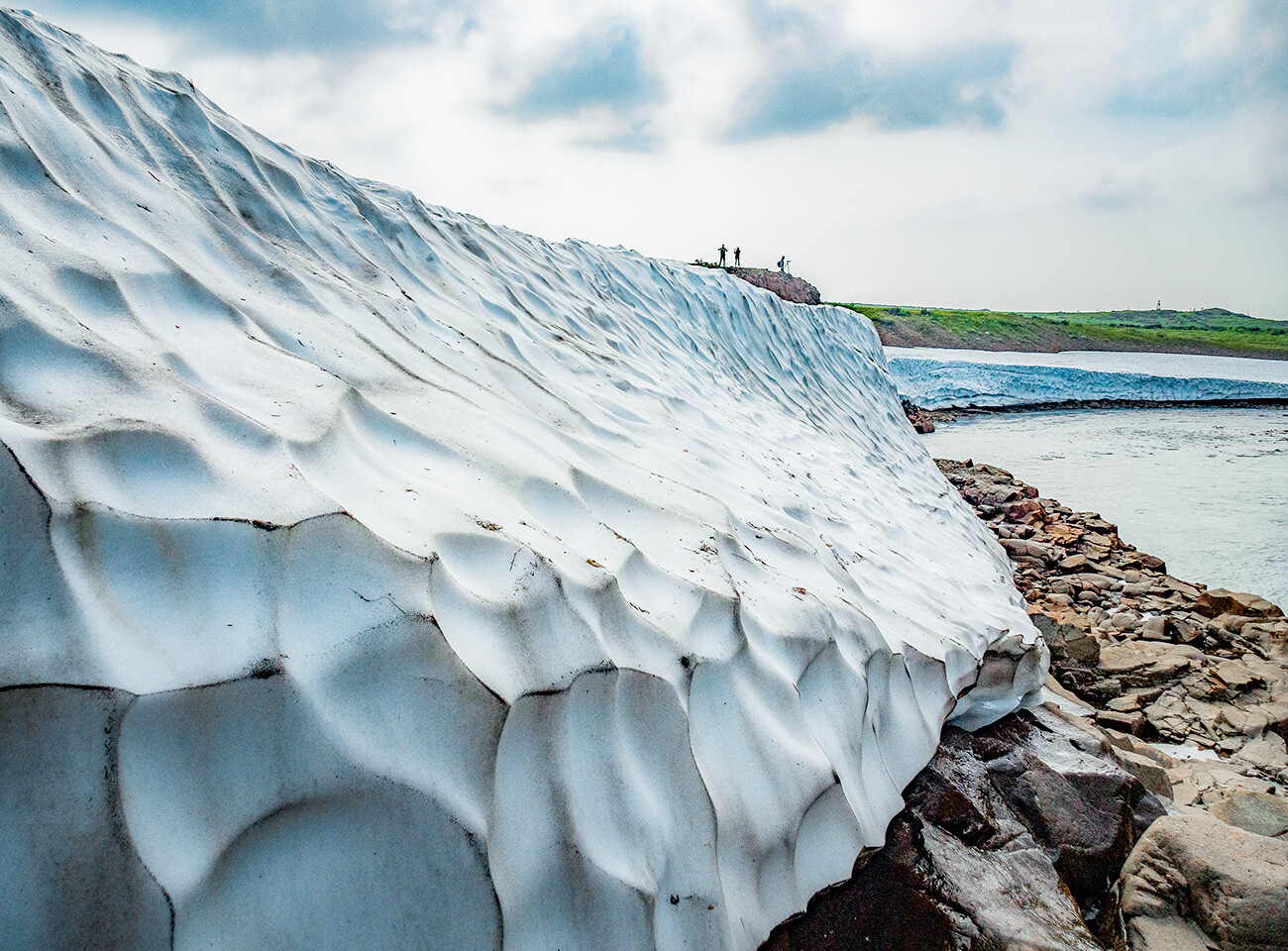
What do you think of this ice? There are tiny people in the left corner.
Pavel KuzmichevSome were more than human height! And, at the same time, around the ice and snow, the flowers of the Red Book-listed Siberian rose blossomed in a riot of color.
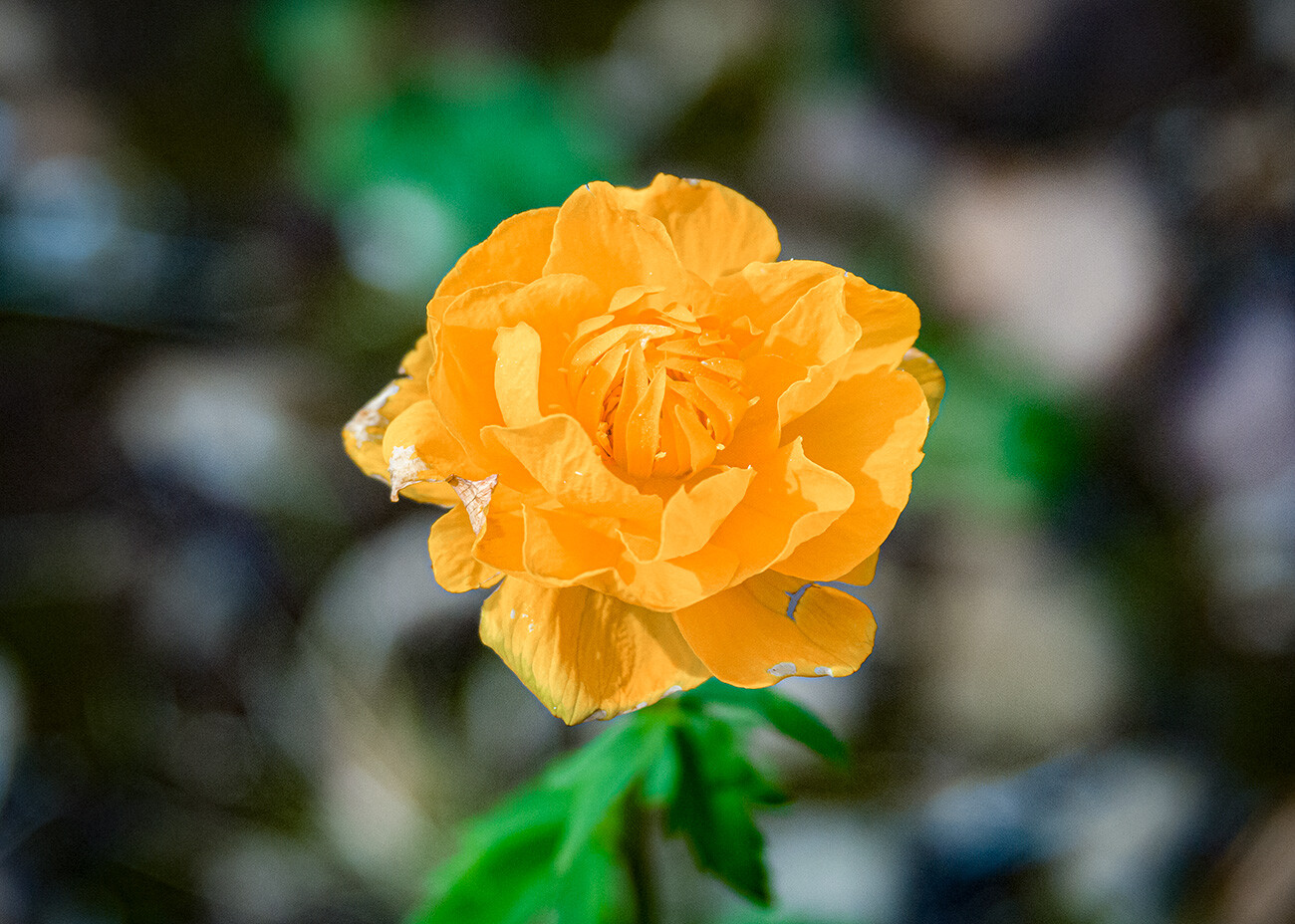
"Siberian Rose."
Pavel KuzmichevEven though Norilsk itself is an industrial city, it is located close to some of the most beautiful wild places on the planet – the Putorana Plateau and the Taymyr Peninsula.
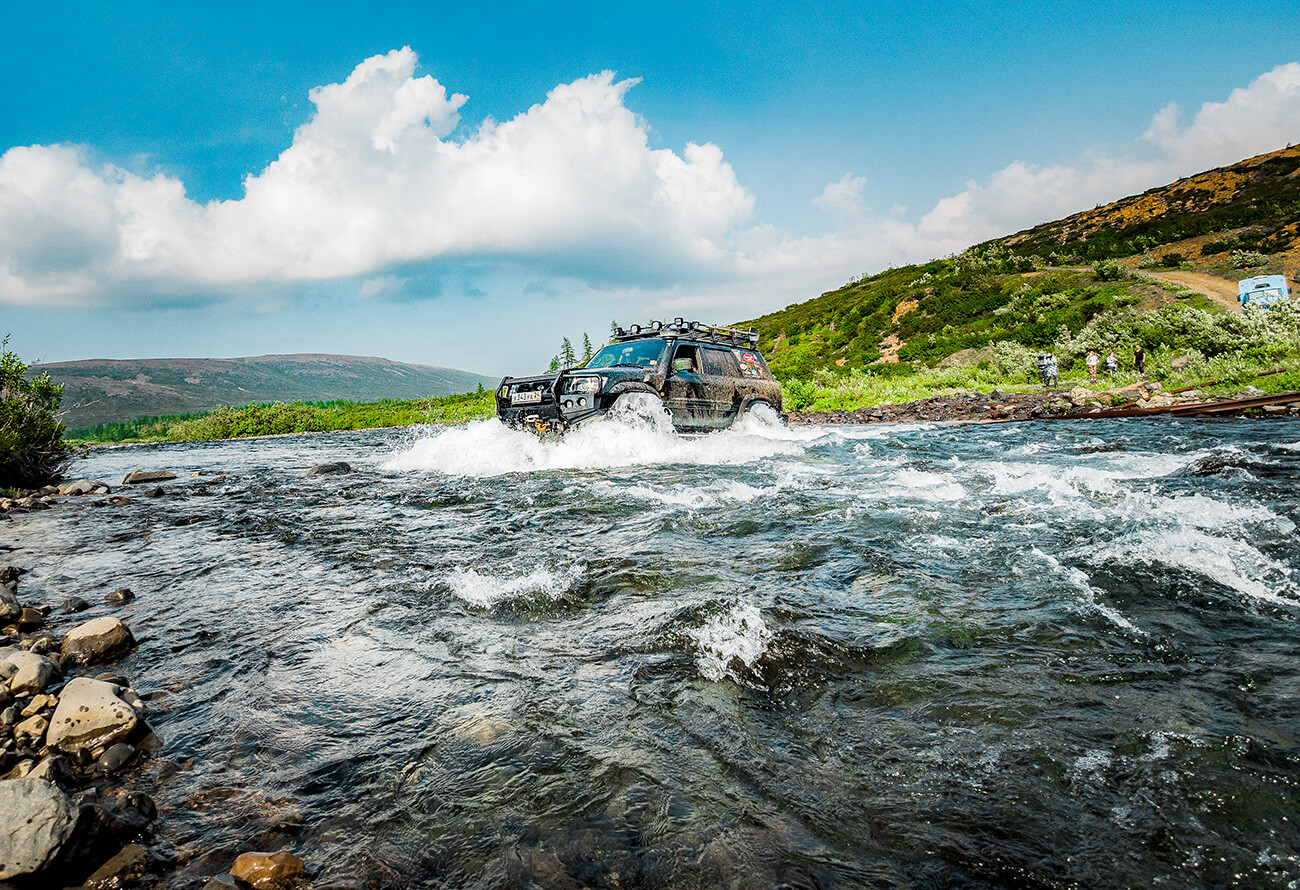
An SUV fording a river.
Pavel KuzmichevThe forest tundra starts just outside the city, soon followed by the Arctic tundra with flat-topped summit-less mountains, turquoise rivers and free-falling waterfalls. In winter, naturally enough, the rivers, lakes and waterfalls completely freeze over.

Krasnye Kamni (Red Stones), a popular vacation spot near Norilsk.
Pavel KuzmichevIn late June-early July, summer arrives abruptly in the Arctic. In a matter of days, the cold tundra starts being carpeted with colorful and exotic flowers. They have a lifespan of just a few weeks and can't afford to waste time getting going.

Such flowers live close to the icing.
Pavel Kuzmichev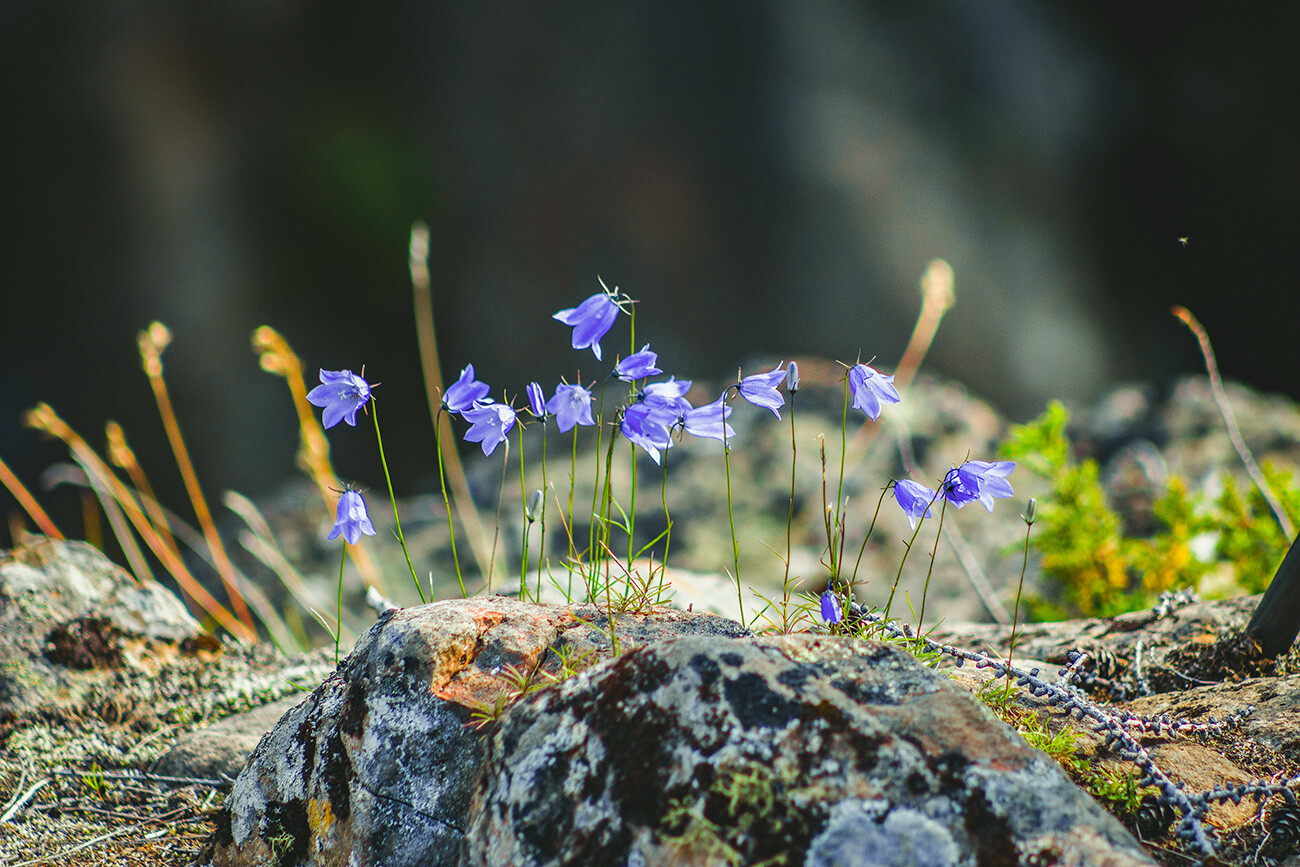
Water starts running down from the mountain gorges. The waterfalls form whole cascades several hundred meters in height.
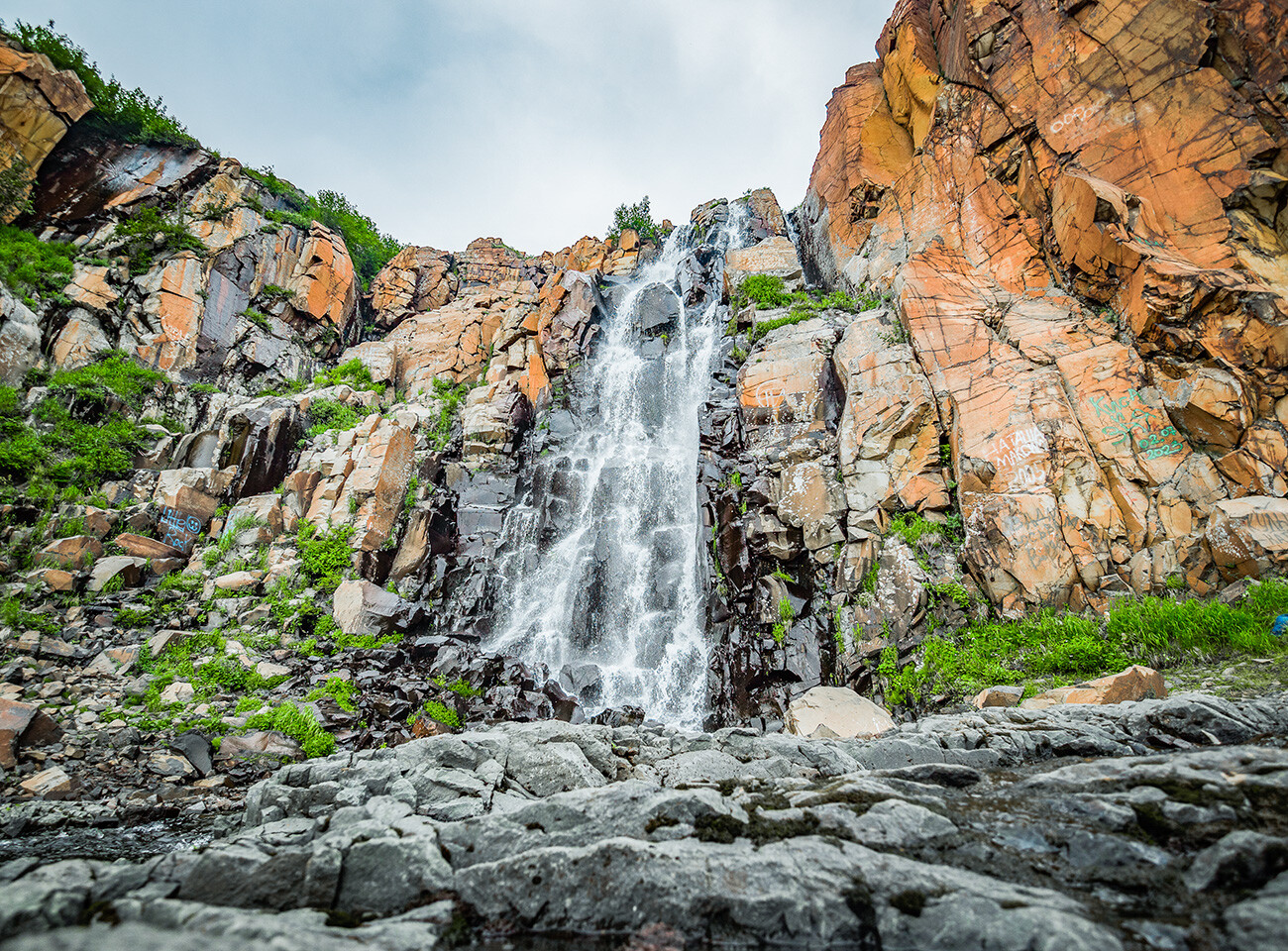
Waterfall at Krasniye Kamni (Red Stones).
Pavel KuzmichevCrowds of hikers and holiday-makers head for the lakes and rivers: They want to get in a bit of fishing or kayaking and organize a family picnic. But, there are practically no bathers in these rivers: The ice on the bottom does not have time to melt or the water to warm up.
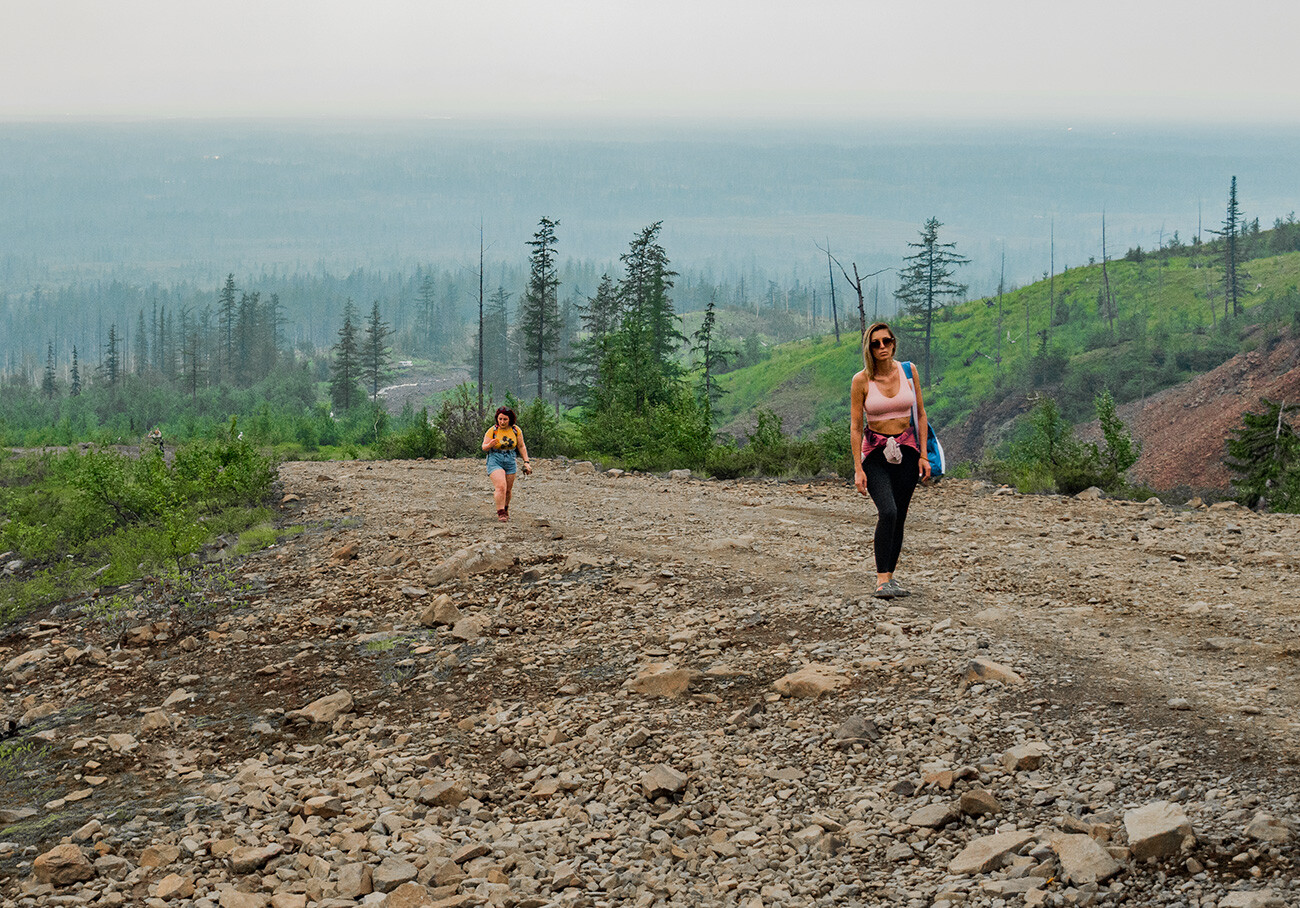
Vacationers are going to the recreation site.
Pavel Kuzmichev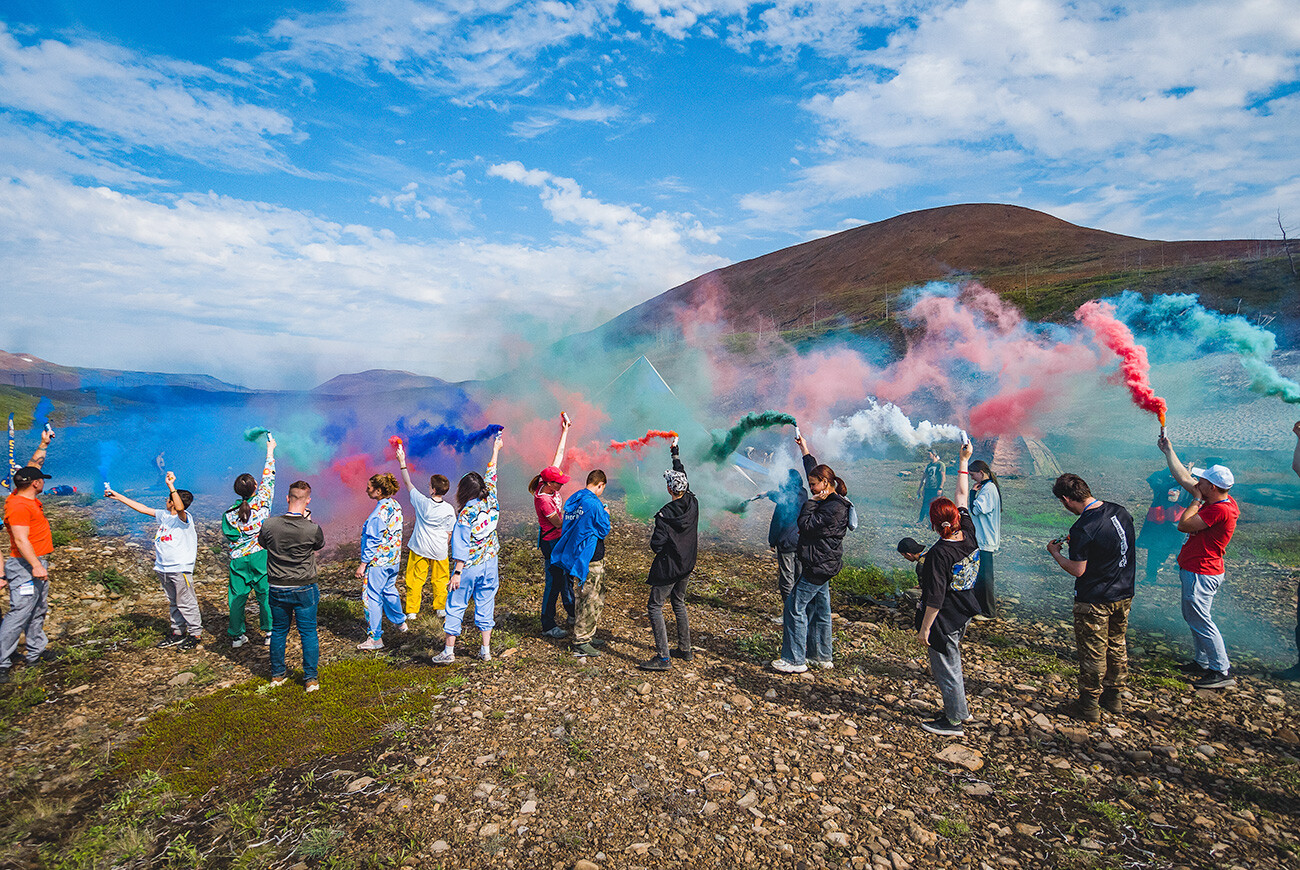
It's summer time!
Pavel KuzmichevLarge built-up patches of perpetual ice remain on the river banks and even sometimes in the rivers themselves. The sun's rays never get to these secluded places.

The water is actually a bright turquoise color.
Pavel KuzmichevIn Norilsk, as in other northern Russian cities, the summer snow could well be not just last year's, but also freshly fallen.
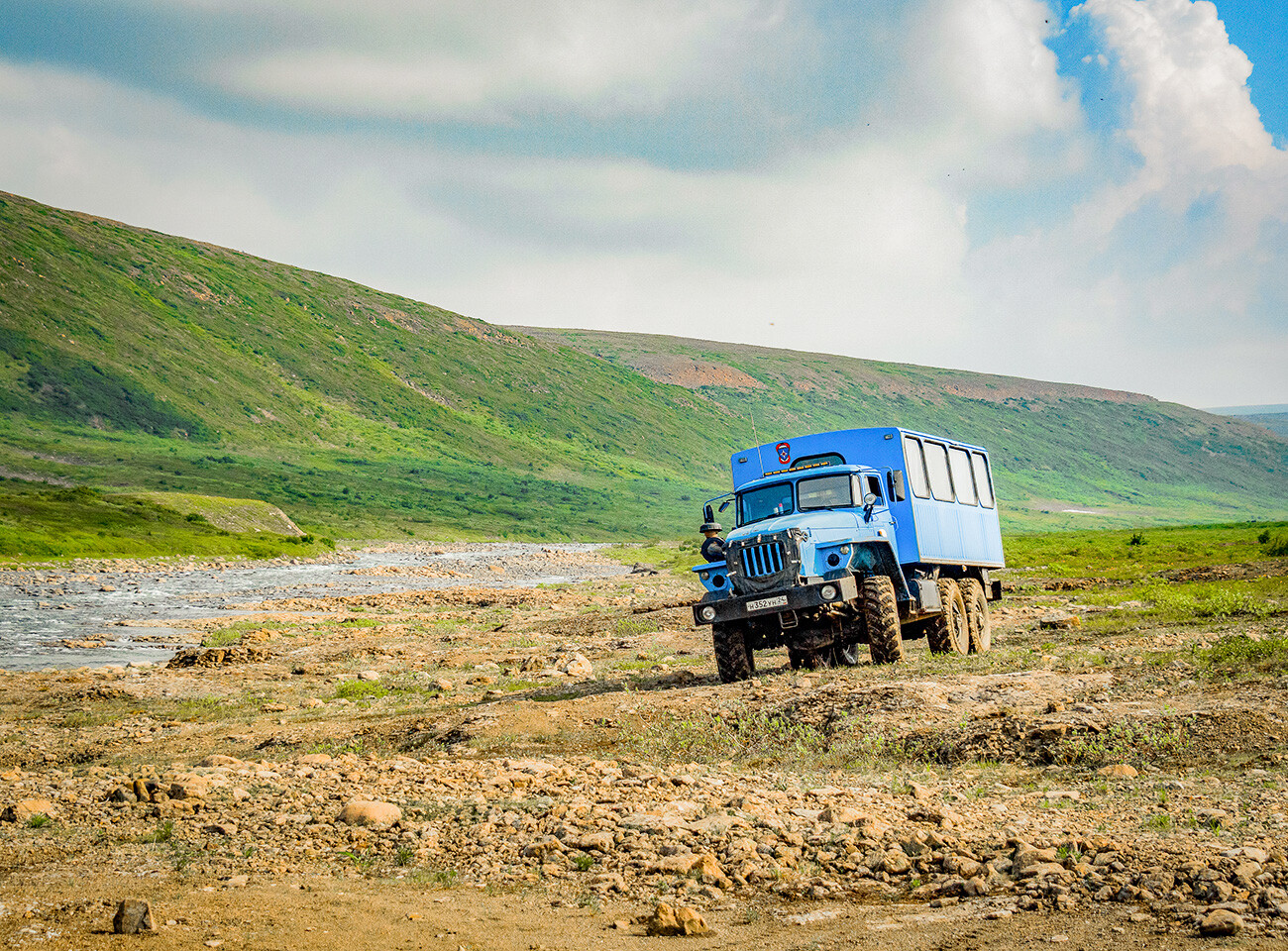
Shift bus.
Pavel KuzmichevThere can be snowfalls in June or July. As a rule, it melts straight away. But, the snow that falls in September is there to stay and will lie there indefinitely.
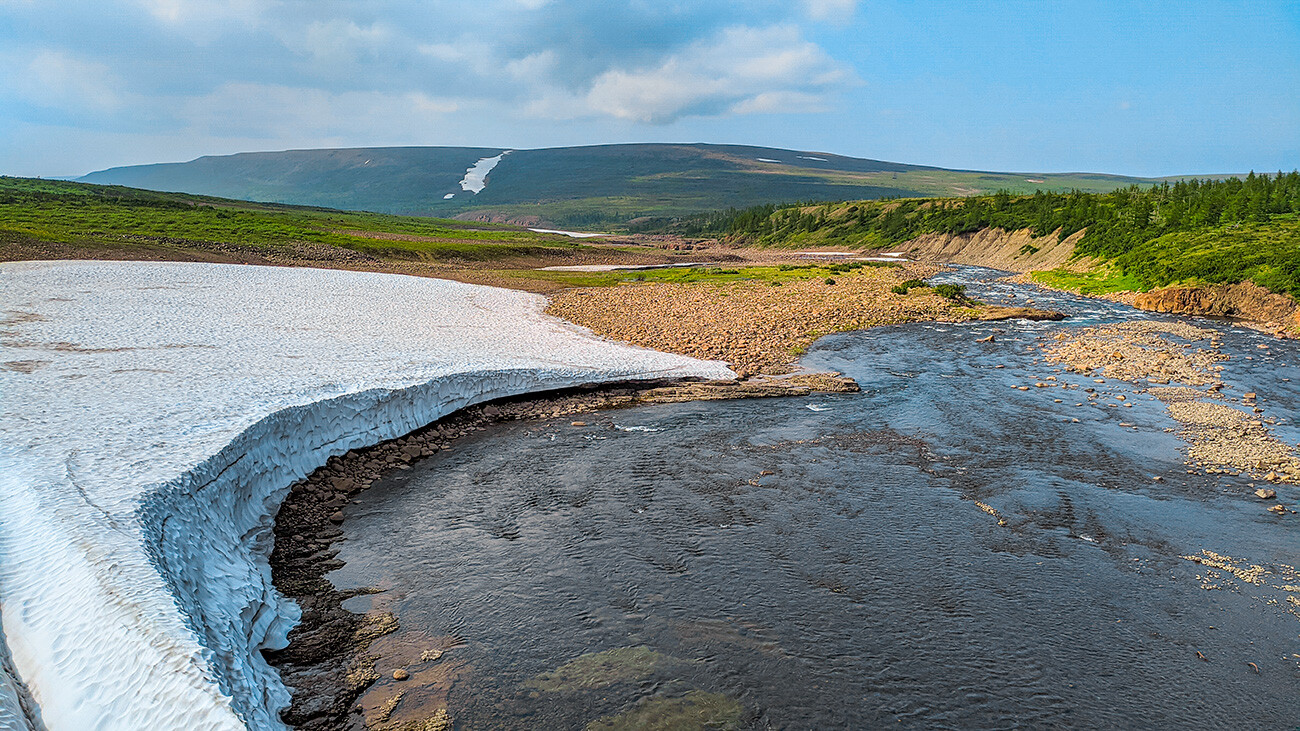
The icy coolness of hot summers.
Pavel KuzmichevDear readers,
Our website and social media accounts are under threat of being restricted or banned, due to the current circumstances. So, to keep up with our latest content, simply do the following:
If using any of Russia Beyond's content, partly or in full, always provide an active hyperlink to the original material.
Subscribe
to our newsletter!
Get the week's best stories straight to your inbox